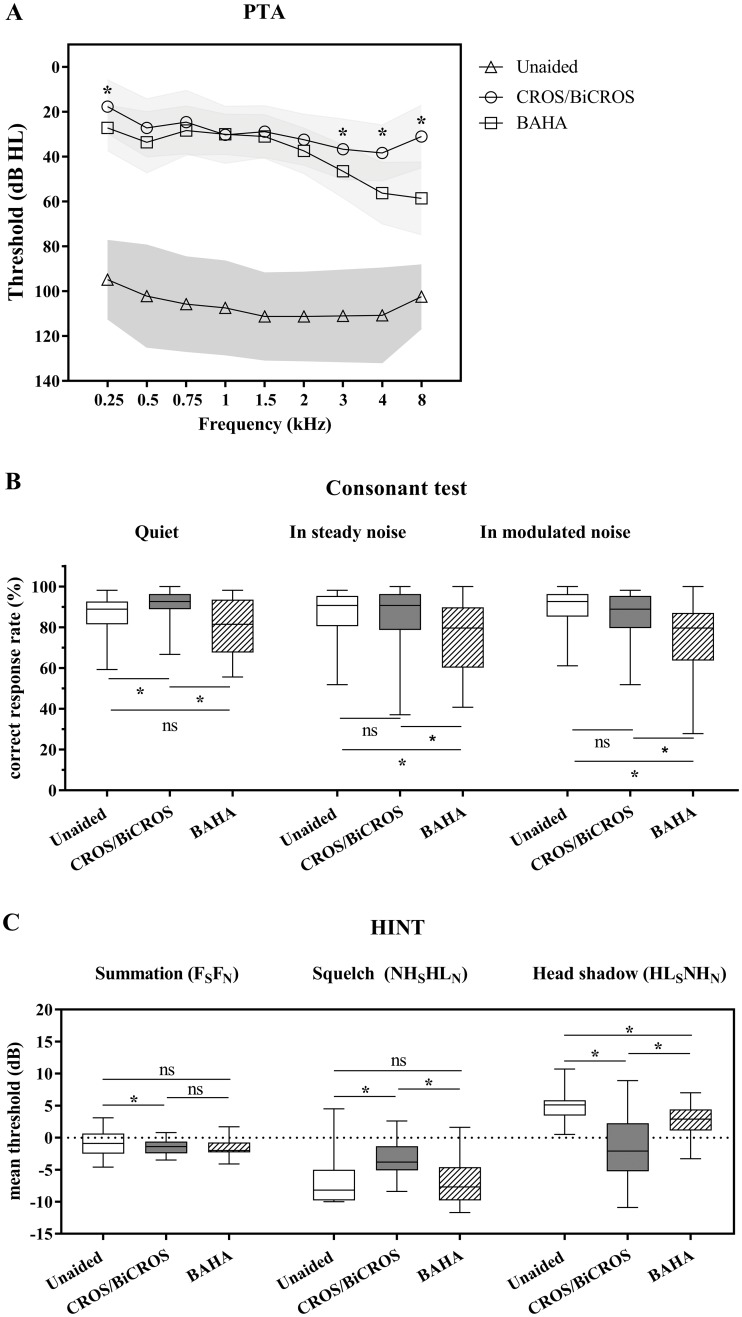Fig 2. Speech perception.
Panel A shows the aided pure-tone threshold at each frequency for the three listening conditions (unaided, aided with CROS/BiCROS, and aided with BAHA). If the pure-tone threshold is scaled out, it is expressed as 110 dB HL (for 250 Hz and 8 kHz) and 125 dB HL (for the rest of the frequencies). Panel B shows consonant perception in quiet and noisy backgrounds for the three listening conditions. Mean and SD are presented as box-and-whisker plots. Panel C shows pseudobinaural benefits of speech perception in noise for the three listening conditions. The SNR threshold was acquired in the presence of noise for the following three conditions: (1) for measuring the summation effect, both speech and noise were presented from the front (FSFN); (2) for measuring the squelch effect, speech was presented from one of the two side speakers (± 90°) toward the better ear (NH), while noise was presented from one of the two side speakers (± 90°) toward the poorer ear (HL) (NHSHLN); and (3), for measuring the head shadow effect, speech was presented from one of the two side speakers (± 90°) toward the poorer ear, while noise was presented from one of the two side speakers (± 90°) toward the better ear (HLSNLN). Asterisks (*) mean a significant difference; p < 0.05 in post-hoc tests using the Bonferroni correction.

